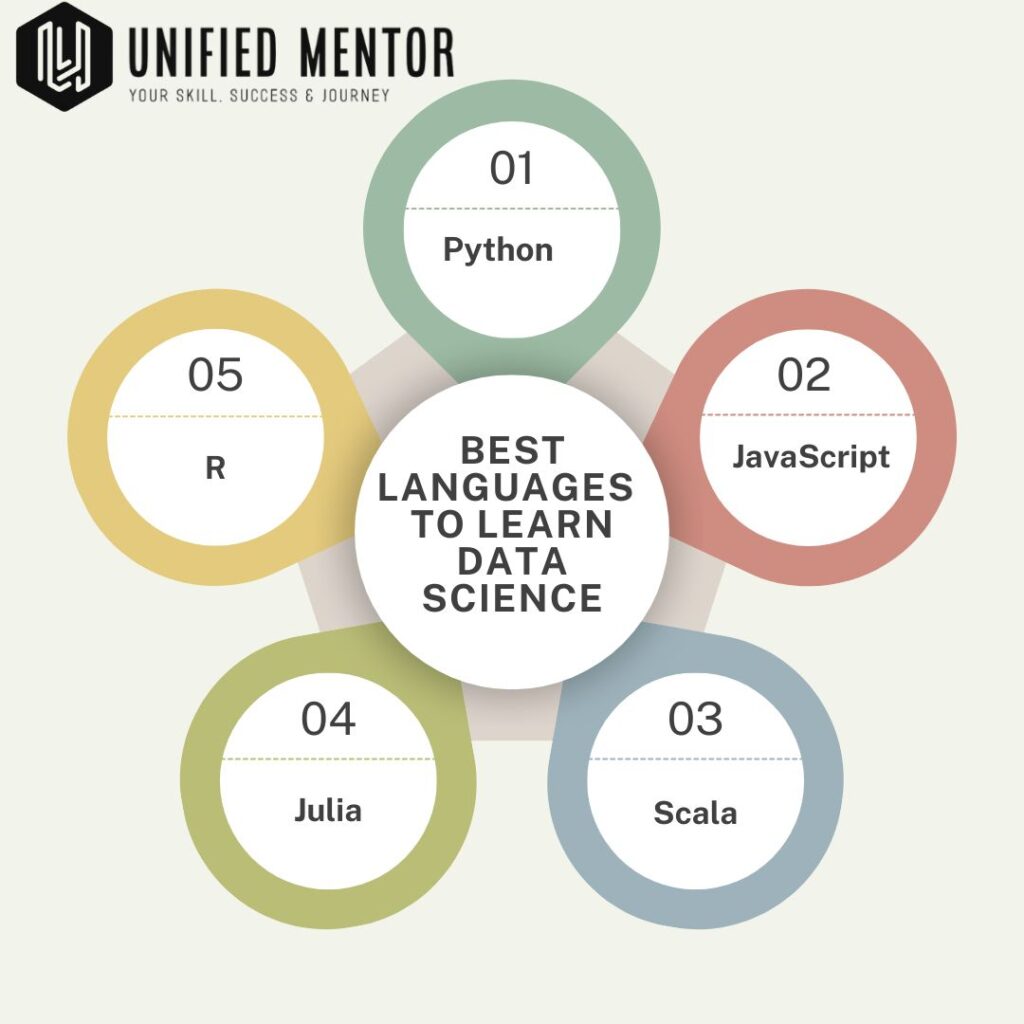In the rapidly evolving field of data science, mastering the right programming languages can significantly enhance your ability to analyze data, develop models, and communicate insights. Here, we explore five of the best languages to learn for anyone looking to make a mark in data science.
1. Python
Why Learn Python?
Python is the undisputed king of data science. Its simplicity and readability make it an ideal choice for beginners, while its powerful libraries, such as Pandas, NumPy, and Matplotlib, provide advanced tools for data manipulation, analysis, and visualization. Additionally, Python’s vast ecosystem supports machine learning frameworks like TensorFlow and Scikit-learn, making it versatile for various data-related tasks.
Use Cases:
- Data cleaning and preprocessing
- Statistical analysis
- Machine learning model development
2. R
Why Learn R?
R is a language built specifically for statistics and data analysis. It offers a rich set of packages and functions designed for data manipulation, statistical modeling, and visualization. With libraries like ggplot2 for data visualization and dplyr for data manipulation, R is favored by statisticians and data scientists alike.
Use Cases:
- Statistical modeling and hypothesis testing
- Data visualization
- Bioinformatics and academic research
3. SQL
Why Learn SQL?
Structured Query Language (SQL) is essential for managing and querying relational databases. Understanding SQL allows data scientists to efficiently retrieve and manipulate data stored in databases, making it a critical skill for data management. Many data-related tasks require data extraction from databases, and knowing SQL streamlines this process.
Use Cases:
- Data extraction and manipulation
- Database management
- Reporting and analysis
4. JavaScript
Why Learn JavaScript?
While traditionally associated with web development, JavaScript is increasingly valuable in data science, especially for data visualization. Libraries like D3.js enable the creation of interactive and dynamic visualizations, making it easier to present complex data in an accessible way. With the rise of web-based data applications, knowledge of JavaScript can set you apart.
Use Cases:
- Interactive data visualizations
- Web-based data applications
- Real-time data dashboards
5. Scala
Why Learn Scala?
Scala is a powerful language that integrates seamlessly with Apache Spark, making it a popular choice for big data processing. Its functional programming features allow for concise and expressive code, which is particularly beneficial when dealing with large datasets. Learning Scala opens the door to scalable data processing and machine learning workflows.
Use Cases:
- Big data processing with Apache Spark
- Distributed computing
- Data engineering tasks
6. Julia
Why Learn Julia?
Julia is a high-performance language specifically designed for numerical and scientific computing. It combines the speed of C with the usability of Python, making it ideal for complex mathematical computations and large-scale data analysis. Julia is gaining traction in academia and industry for its efficiency in handling large datasets.
Use Cases:
- High-performance numerical analysis
- Scientific computing
- Machine learning research
Conclusion
Choosing the right programming language is crucial in your data science journey. Python and R are excellent starting points for analysis and modeling, while SQL is essential for data management. JavaScript, Scala, and Julia offer specialized capabilities that can further enhance your skill set, depending on your focus area. By mastering these languages, you’ll be well-equipped to tackle the challenges of data science and unlock new opportunities in this dynamic field. Start learning today and take your first step towards becoming a data science expert!
